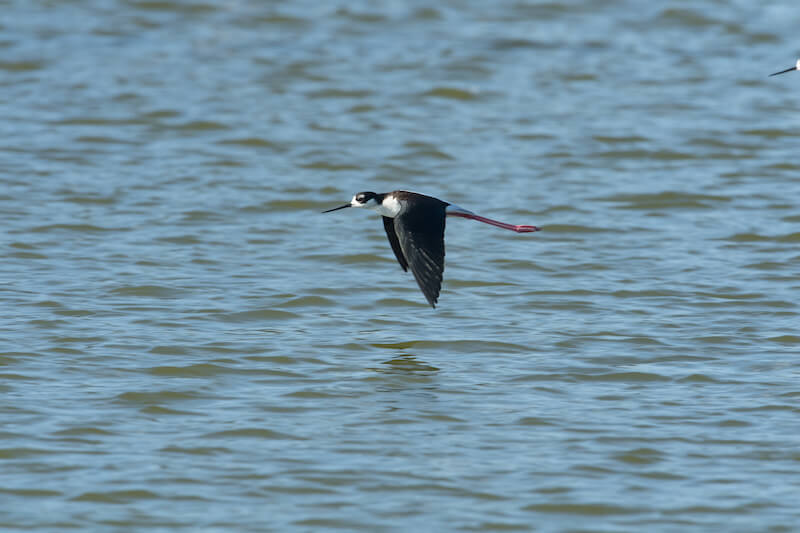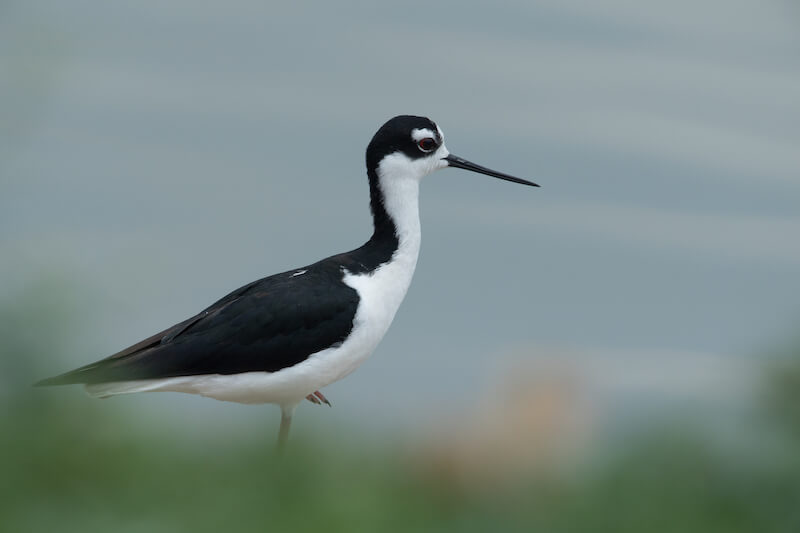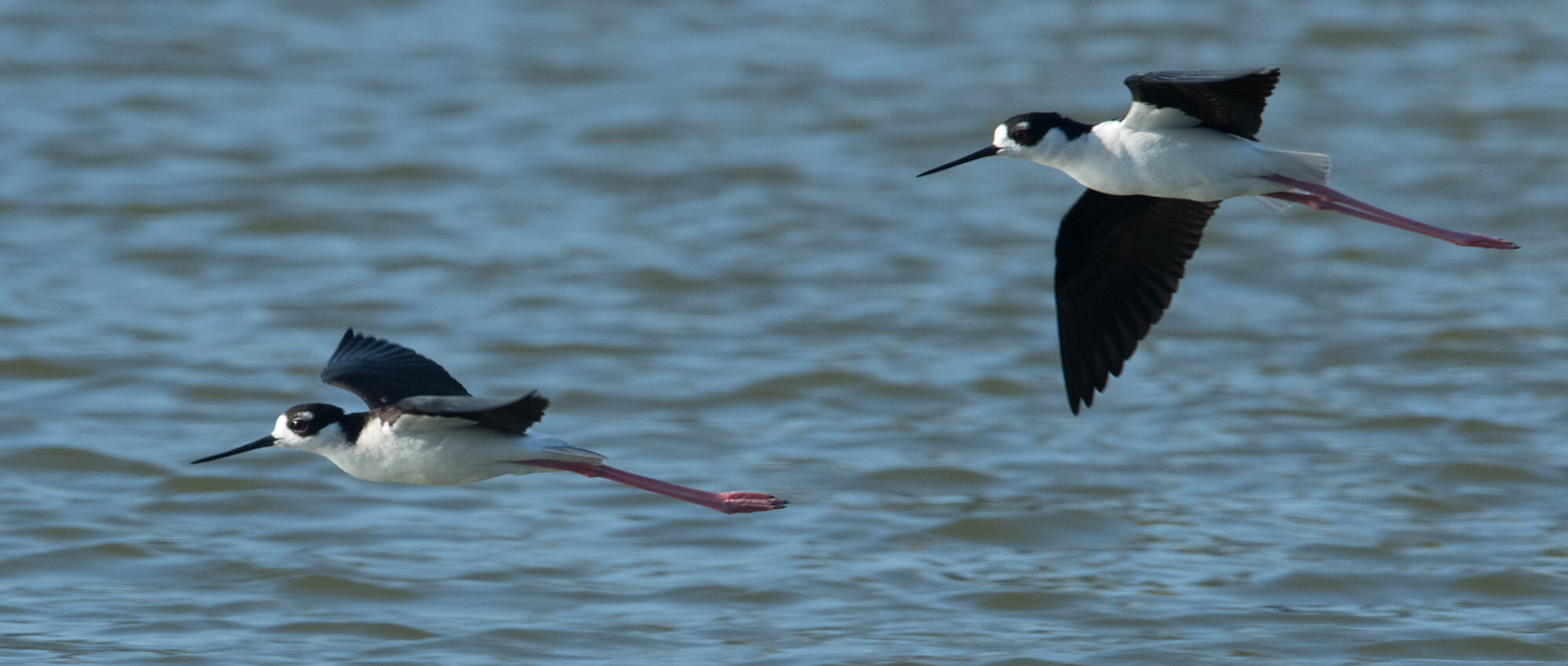
Black-necked stilt
Cigüeñuela Americana
Himantopus mexicanus
The Black-necked Stilt is highly distinctive, being white below, black above with very long, thin bright red legs. Stilts' legs are longer in proportion to their bodies than any other bird except the flamingo. It reaches a height of 33-43 cm (13-17 in) with a 68 cm (27 in) wingspan. Its weight is about 160 to 210 g. Its iris is bright red. Its black bill curves slightly upward. It inhabits swamps, marshes, flooded fields, ponds and lake edges where it feeds on aquatic invertebrates such as mollusks, shrimp, snails, insects, larvae. It also searches for small frogs and fish. It rarely feeds on seed or vegetation. Adult males have black backs and white bellies. No sexual dimorphism. Both males and females have long, pointed black wings. The partially webbed feet allow them to swim but they rarely do. Both female and male choose the site; they look for places with soft sand or other substrate that can be scraped away to form the nesting depression. The clutch size is 2-5 olive-colored eggs with dark brown speckling on the shell. The incubation period is of 24 to 30 days. Their lifespan is approximately 20 years. Adult stilts are highly territorial. When resting, they draw up one leg, resting on the other, or sit on the ground, resting on the lower, longer part of the leg. They are sensitive to pollution, pesticides, and heavy metals particularly selenium.
Mide de 33 a 43 cm y pesa de 160 a 210 g. Presenta patas muy largas y pico largo, delgado y negro y curvo hacia arriba. El macho tiene las patas rojo brillante. Iris rojo. El plumaje de la nuca, alas, espalda, y parte posterior de la cabeza de color negro. La parte superior del pecho presenta un tono rosado y cola gris pálido. Sus alas negras son puntudas. El resto de su cuerpo es blanco. La hembra es similar al macho. Los jóvenes son similares al macho y tienen plumas negras con bordes café. Habitan en humedales de aguas poco profundas en la región tropical y templada como pantanos, charcos, ciénagas, lagos, márgenes de ríos, arrozales y campos inundados. Capturan sus presas moviendo su pico de varias formas en el fango. Se alimentan de invertebrados, moluscos, insectos, larvas, caracoles y consume muy poca semilla o productos vegetales. La estructura parcial de sus patas parecida a la de los patos le permiten nadar pero rara vez lo hacen. El macho y la hembra seleccionan el lugar del suelo donde fabricar su nido y hacen una depresión que luego cubre de hojas. Allí ponen entre 2 a 5 huevos color oliva con puntos color café que incuban durante 24 a 30 días. Pueden vivir 20 años. Los machos adultos son muy territoriales y pueden atacar cuando cuidan sus nidos. Descansan sobre una pata. Son muy sensibles a la contaminación de pesticidas y metales pesados en el agua.
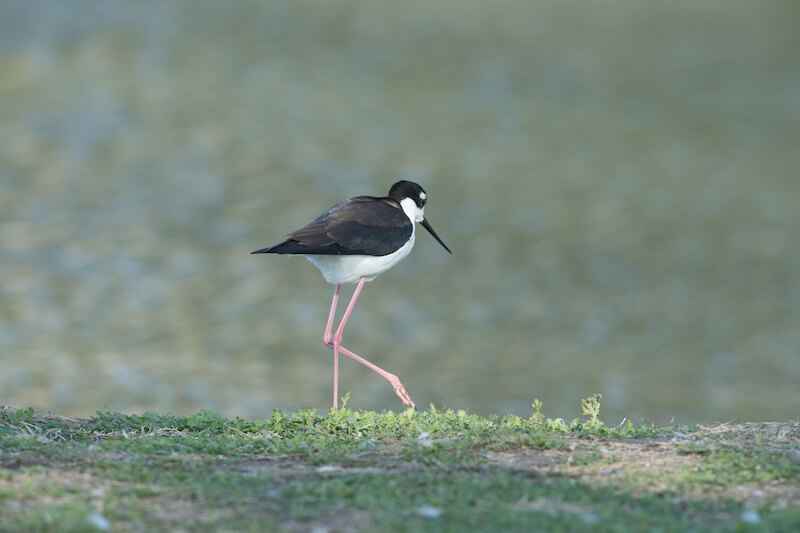
LAM_3055
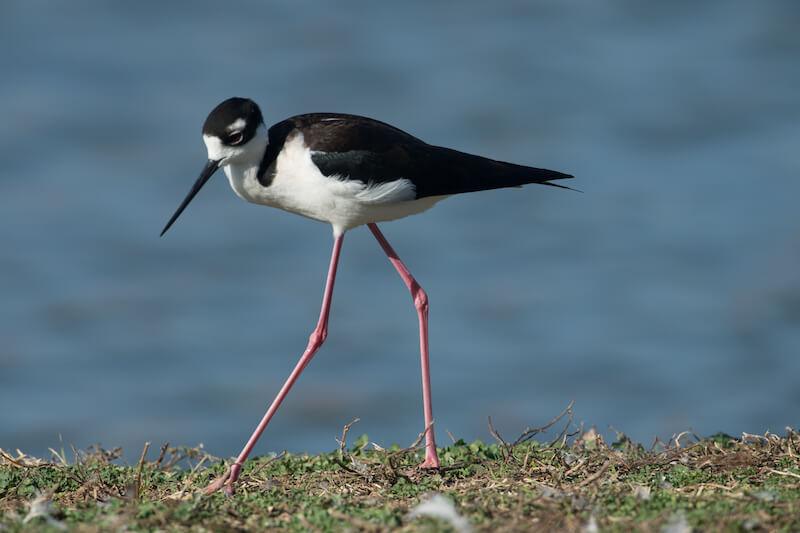
LAM-3050

LAM-3051

LAM_4666
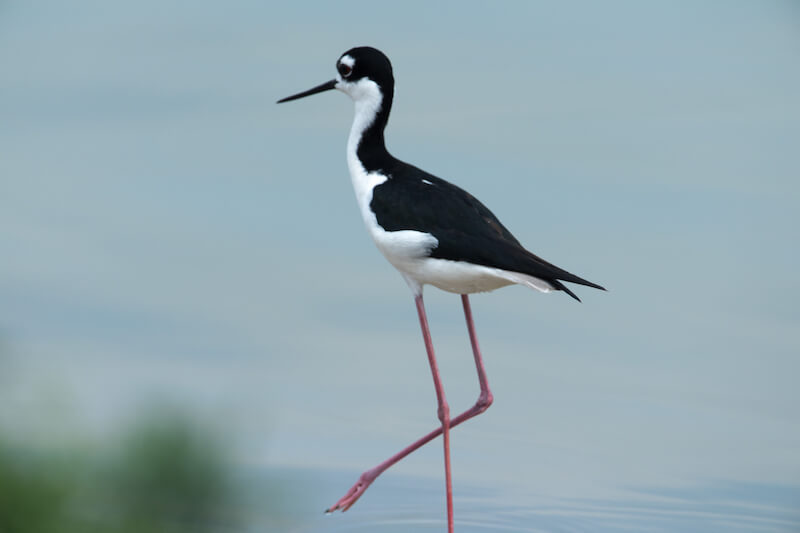
LAM_4673
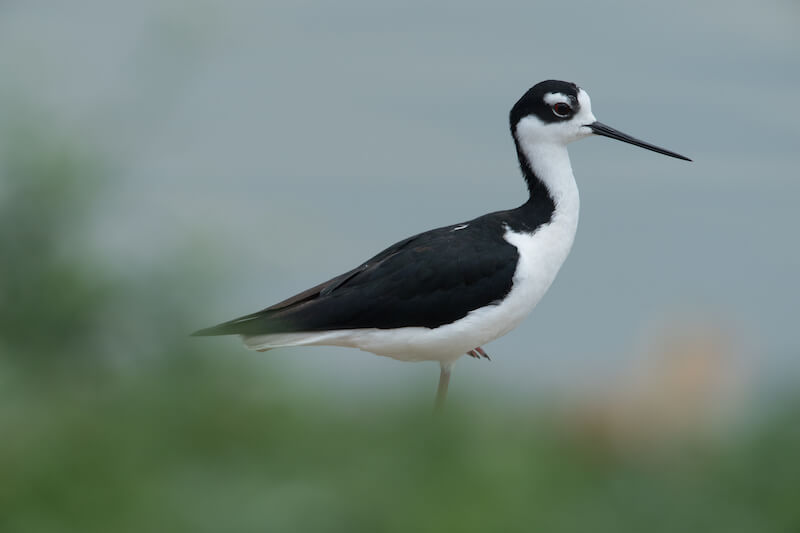
LAM_4670


